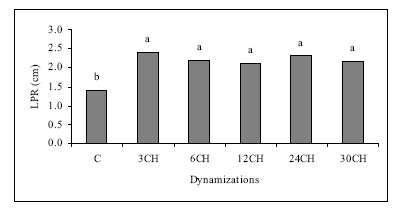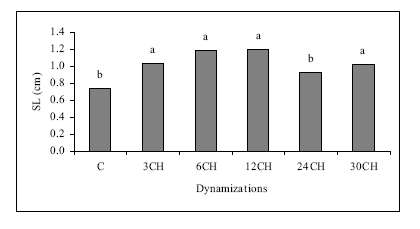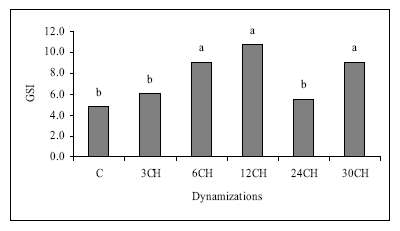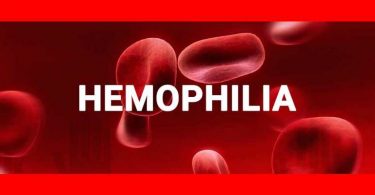Reprinted from: International Journal of High Dilution Research, v.7, issue 22, p.3034, March 2008
-with permission from Prof. Carlos Moacir Bonato Universidade Estadual de Maringá (UEM) Department of Biology, State University of Maringá, Paraná, Brazil
ABSTRACT
The effects of high dilutions of Cymbopogon winterianus (citronella) on the growth and germination of Sida rhombifolia are analyzed; 5 homeopathic dilutions (3cH, 6cH, 12cH, 24cH, 30cH) and a control (water) were used, with 5 repetitions. Variables analyzed were the primary growth of the root system, length of the shoot, fresh mass total, germination percentage and germination speed index. All dilutions stimulated the primary growth of the root. Dilutions 3cH, 6cH, 12cH and cH stimulated the growth of the aerial parts and 24cH inhibited it. Dilutions 6cH, 12cH, 24cH and 30cH stimulated a larger production of fresh mass than 3cH. Dilution 12cH resulted in the largest germination percentage while 24cH in the lowest. Dilution 12cH resulted in the highest score in the germination speed index, while 3cH and 24cH in the lowest.
Key words: Homeopathic dilutions; Plants; Germination; Growth; Cymbopogon winterianus; Sida rhombifolia
Introduction
As it is known, the formulation of the homeopathic therapeutic system was based on experimentation and observation of the effects of high dilutions of substances on healthy human beings. Experiments on plants developed in Europe, India, Mexico and Brazil have shown that high dilutions also elicit effects in plants.(1) Experimental research on healthy plants show the potential of high dilutions to influence the system and modify their dynamic patterns of behavior, manifested in an increase of defensive substances, photosynthesis, detoxification of aluminum and copper and alterations in the metabolism of plants.(2,18) These results indicate that homeopathic preparations may be useful from an agroecological perspective, as they favor sustainability and autonomy in the rural environment as well as the production of healthy food and environmental quality. Sida rhombifolia L. is an invading seed (space)propagated species common in the southern region of Brazil. It develops in yearly and perennial cultures, orchards, gardens, pastureland and uncultivated plots; it competes highly with agriculture due to the development of deep root systems which may reach 50 cm deep with many secondary roots.(19,20) Cymbopogon winterianus Jowitt, hailing from India and popularly known as citronella, is widespread in Brazil. It is a perennial herb which forms 1meter high compact and strong clumps. Citronella has economical importance in the production of essential oils employed in the aromatic industry and as an insect repellant; furthermore, it has antimicrobial and acaricide properties. (21)More than 80 substances are comprised, from which citronellal (40%), citronellol, geraniol, limonene and esters have particular importance.(22,24) According to Einhelling,(25) alellochemicals may interfere in the metabolism of plants in several aspects, including growth, photosynthesis, enzymatic activity, protein synthsis, membrane permeability and transport. The present study aimed to verify the response of seedlings of S. rhombifolia to homeopathic dilutions of C. winterianus.
Materials and methods
The study was conducted at the Homeopathy and Vegetation Physiology laboratory of the Department of Biology of the State University of Maringa. The initial tincture was prepared from leaves of adult C. winterianus collected in the morning from the botanic garden of the University in a proportion 1:10(p/v), 1 g leaves/10 g cereal alcohol 70%. After 15days maceration, the solution was filtered and the tincture was preserved in an amber flask. Homeopathic dilutions were prepared from this tincture following the Brazilian Homeopathic Pharmacopoeia (FHBII).(26) The first dilution (1cH) was prepared adding 200 µl (0.2 mL) of tincture to 19.8 mL (1/100) distilled water with posterior succussion 100 times by mechanical arm dynamizer (Model Denise 50). Dilutions prepared were 3cH, 6cH, 12cH, 24cH and 30cH. The flasks were cleaned and sterilized according to FHBII or cleaned with alcohol 70%, boiled for 1 hour and dried on stove at 140ºC for 1 hour.
Dormancy of S. rhombifolia seeds was interrupted through mechanical (lime) and thermal scarification by immersing the seeds in water at 100ºC for 2 minutes. 20 seeds were distributed in Petri dishes (total=600 seeds) covered by Whatman#1 filter paper imbibed with 5mL of different homeopathic dilutions (3cH, 6cH, 12cH, 24cH and 30cH) and water (control) and distributed homogeneously in benches with light at room temperature for 7 days. Variables essayed were: length of primary root and length of shoot by a graded ruler; increase of fresh biomass by analytic scale; percentage of germination and germination speed index (GSI). Only seeds with 2.0 mmlong root protrusion were taken into account. Maguire’s equation (27) was used to calculate GSI: GSI = G1/N1 + G2/N2 + G3/N3 + … Gn/Nn, where G1, G2, G3, … Gn = number of seeds germinated on the day of observation and N1, N2, N3, … Nn = number of days after seed planting. The experiment design was totally randomized and included 5 repetitions. Data were analyzed by ANOVA and discriminated mean compared by ScottKnott test at 5% probability (SAEG 5.0).
Results
S. rhombifolia responded to all dilutions regarding the length of primary root (Figure 1).
Figure 1. Effect of homeopathic preparation C. winterianus on the length of primary root (LPR) of S. rhombifolia seedlings with 5 solutions. (Mean followed by same letters does not differ statistically in Scott-Knott test at 5% probability).
The increase in the length of primary root, which significantly differed from the control, shows the healthy state of the seedlings. Several experiments using homeopathic dilutions in seed germination and plant growth have also been reported.(16,2832) Following Lisboa et al. (33) it may be suggested that the information carried by homeopathic dilutions had an influence on the seedlings of S. rhombifolia physically expressed as an increase in the length of the primary root.
The length of shoots increased with dilutions 3cH, 6cH, 12cH and 30cH by comparison to the control. Results were similar to those in the root system (Figure 2). The effect of dilution 24cH was not significantly different from the control’s. These results are consistent with the notion of oscillation as a characteristic of high dilutions.(34)
Figure 2 – Effect of homeopathic preparation C. winterianus on the shoot length (SL) of S. rhombifolia seedlings treated with 5 solutions. (Mean followed by the same letters does not significantly differ by Scott-Knott test at 5% probability).
All dilutions but 3cH increased the production of fresh biomass regarding the control. (Figure 3) Although the mechanism(s) of action of high dilutions on plants are still not known, results suggest that somehow dilutions 6cH, 12cH, 24cH and 30cH increased the metabolic efficiency of the seedlings.
Figure 3 – Effect of homeopathic preparation C. winterianus on the increase of fresh biomass (FB) of S. rhombifolia seedlings treated with 5 solutions (Mean followed by the same letters does not differ statistically by Scott-Knott test at 5% probability). Germination percentage (GER) was affected by dilutions of C. winterianus. Dilutions 6cH, 12cH and 30cH had a higher effect than 3cH and 24cH (Figure 4).
Figure 4 – Effect of homeopathic preparation C. winterianus on the percentage of germination (GER) of S. rhombifolia seeds treated with 5 solutions. (Mean followed by the same letters does not differ statistically by Scott-Knott test at 5% probability).
Other studies have shown that citronella in ponderal doses inhibit the germination of seeds, Craveiro and Mattos have suggested that the reason is its monoterpene contents. Our study, conducted with high dilutions of citronella obtained the opposite results. It may be suggested that dilutions 6cH, 12cH and 30cH activated some enzymes involved in endosperm store degradation and transport to the embryo during germination.(35) Experimental results indicate that GSI was affected by dilutions of C. winterianus. Dilutions 6cH, 12cH and 30cH were associated to a higher GSI, while dilutions 3cH and 24cH were not different from the control. (Figure 5) It may be thought that C. winterianus had an effect on the metabolism of the seeds of S. rhombifolia, intensifying enzyme reactions, the transport of metabolites, digestion of proteins, carbohydrates and lipids of the spare tissue for cellular elongation retaking and consequently of the emergence of radicles.
Figure 5 – Effect of homeopathic preparation C. winterianus on germination speed index (GSI) in S. rhombifolia seeds, with 5 solutions. (Mean followed by the same letters does not differ statistically by Scott-Knott test at 5% probability).
Conclusions
All 5 dilutions of C. winterianus increased the primary root of S. rhombifolia seedlings; all dilutions but 24cH elicited an increase in the aerial region. Seedlings exhibited a higher level of fresh biomass production under the influence of all dilutions but 3cH. Regarding germination percentage, dilutions 6cH, 12cH and 30cH elicited a higher score, which was not observed with dilutions 3cH and 24cH. Finally, the germination speed index was higher with dilutions 6cH, 12cH and 30cH, which was not the case of dilutions 3cH and 24cH. These results indicate that homeopathic dilutions of C. winterianus have an effect on the germination and growth of S. rhombifolia. Moreover, that these effects have an oscillatory pattern, which is consistent with current conceptions of the particularities of the biological effects of high dilutions.
No mechanism of action may be still suggested for the biological effects of high dilutions in general and on plants, in particular. The results of this study suggest that several metabolic features of plants might be involved. Further studies are needed to confirm the experimental data, to assess the possible significance of their application in agronomy and to postulate mechanism(s) of action of high dilutions on plants.
References
1. Bonato CM. Homeopatia: fisiologia e mecanismo em plantas. 4° Seminário sobre Ciências Básicas em Homeopatia. Anais. Lages (SC), November, 1416, 2004, pp. 1744.
2. Casali VWD, Castro DM, Andrade FMC, Lisboa SP. Homeopatia bases e princÃpios. Viçosa: UFV/ DFT; 2006.
3. Andrade FM, Casali VWD, Almeida AA. Preparados homeopáticos e adaptação de plantas em solo degradado. 7° Seminário Brasileiro sobre Homeopatia na Agropecuária Orgânica. Anais. Campos dos Goytacazes (RJ), August, 67, 2006, pp. 217238.
4. Bonato CM. Homeopatia em modelos vegetais. Cultura Homeopática. 2007; 6(21):2428.
5. Armond C. Indicadores quÃmicos, crescimento e bioeletrografias de plantas de jambu (Acmella oleracea L.), capimlimão (Cymbopogon citratus (DC) Stapf) e folhadefortuna (Bryophyllum pinnatum (Lam.) Oken) submetidas a tratamentos homeopáticos. 2007. Thesis (Doctorate). Department of Phytotecnics. Federal University of Viçosa, UFV, ViçosaMG, Brazil.
6. Arruda VM. Aplicações de soluções homeopáticas em Achilleia millefolium L. (Asteraceae): abordagem morfofisiológica. 2005. Dissertation (Master). Departamento of Phytotechnics. Federal University of Viçosa, UFV, ViçosaMG, Brazil.
7. Peres PGP, Souza AF, Bonato CM. Efeito dos medicamentos homeopáticos Sulphur e Arsenicum album em algumas variáveis de crescimento de calêndula (Calendula officinalis L.). 7° Seminário Brasileiro sobre Homeopatia na Agropecuária Orgânica. Anais. Campos dos Goytacazes (RJ), August 67, 2006, pp. 91182.
8. Nunes RO. Teor de tanino em Sphagneticola trilobata (L.) Pruski com aplicação da homeopatia Sulphur. 2005. Dissertation (Master). Departamento f Phytotecnics. Federal University of Viçosa, UFV, ViçosaMG, Brazil.
9. Silva MRB. Assimilação de CO2 em plantas de Sphagneticola trilobata (L.) Pruski tratadas com preparados homeopáticos. 2005. Dissertation (Master). Departamento of Phytotechnics, Federal University of Viçosa, UFV, ViçosaMG, Brazil.
10. Lisboa SP. Antagonismo de preparações homeopáticas na fotossÃntese de plantas de Ruta graveolens (L.). 2006. Dissertation (Master). Departament of Phytotechnics, Federal University of Viçosa, UFV, ViçosaMG, Brazil.
11. Moretti MR, Rocha M, Bonato CM. Efeito de diferentes dinamizações homeopáticas de AlCl3 no comprimento da raiz principal de plântulas de milho. XI Encontro Anual de Iniciação CientÃfica. Anais. Maringá, 2002
12. Rocha M, Moretti MR, Bonato CM. Efeito de dinamizações de Sulphur no comprimento da raiz principal de plântulas de milho submetidas a estresse por alumÃnio. 7° Seminário Brasileiro sobre Homeopatia na Agropecuária Orgânica. Anais. Campos dos Goytacazes (RJ), August, 67, 2006, pp. 8189.
13. Nitien G, Boiron J, Marin A. Ação de doses infinitesimais de sulfato de cobre sobre plantas previamente intoxicadas por essa substância; ação de uma 15ª centesimal hahnemanniana. In: Pesquisa experimental moderna em homeopatia. Rio de Janeiro: Editorial Homeopática Brasileira; 1969.
14. Almeida MAZ. Resposta do manjericão (Ocimum basilicum L.) a aplicações de preparações homeopáticas. 2002. Dissertation (Master). Departament of Phytotechnics, Federal University of Viçosa, UFV, ViçosaMG, Brazil.
15. Castro DM. Preparações homeopáticas em plantas de cenoura, beterraba, capimlimão e chambá. 2002. Thesis (Doctorate) Departament of Phytotechnics, Federal University of Viçosa, UFV, ViçosaMG, Brazil.
16. Bonato CM, Silva EP. Effect of homeopathic solution Sulphur on growth and productivity of radish. Acta Scientiarum Agronomy, 2003; 25: 259263.
17. Silva MRB, Casali VWD, Bonato CM, Santos NT. Interaction Among CO2 Assimilation and Minutes Posttreatment of Sphagneticola trilobata with Apis mellifica 6CH. Cultura Homeopática 2006; 5(16):48.
18. Marques RM. Vigor de sementes de milho tratadas com os preparados homeopáticos Antimonium crudum e Arsenicum album. 2007. Dissertation (Master) Departament of Phytotechnics, Federal University of Viçosa, UFV, ViçosaMG, Brazil.
19. Lorenzi H. Plantas daninhas do Brasil: terrestres, aquáticas, parasitas e tóxicas. 3rd ed. Nova Odessa: Instituto Plantarum; 2000.
20. Kissmann KG, Groth D. Plantas infestantes e nocivas. 2nd ed. São Paulo: Basf; 2000.
21. Marco CA, Innecco R, Mattos SH, Borges NSS, Nagao EO. CaracterÃsticas do óleo essencial de capimcitronela em função de espaçamento, altura e época de corte. Horticultura Brasileira. 2007; 25: 429432.
22. Matos FJA. Plantas medicinais: guia de seleção e emprego de plantas usadas em fitoterapia no Nordeste do Brasil. 2nd ed. Fortaleza: Imprensa Universitária; 2000.
23. Costa LCB, Corrêa RM, Cardoso JCW, Pinto JEBP, Bertolucci SKV, Ferri PH. Secagem e fragmentação da matéria seca no rendimento e composição do óleo essencial de capimlimão. Horticultura Brasileira. 2005; 23:956959.
24. Craveiro AA. Óleos de plantas do Nordeste. Fortaleza: Edições UFC; 1981.
25. Einhelling FA. Mechanisms and modes of actions of allelochemicals. In: Putnam AR, Tang CS (ed.) The science of allelopathy. New York: John Willey e Sons; 1986.
26. Farmacopéia Homeopática Brasileira. 2nd. São Paulo: Atheneu, 1997.
27. Maguire JD. Speed of germinationaid in selection and evaluation for seedling emergence and vigor. Crop Sci. 1962; 2: 176177.
28. Betti L, Brizzi M, Nani D, Peruzzi M. A pilot statistical study with homoeopathic potencies of Arsenicum album in wheat germination as a simple model. British Homoeopathic Journal. 1994; 83(4): 195201.
29. Betti L, Brizzi M, Nani D, Peruzzi M. Effect of high dilutions of Arsenicum album on wheat seedlings from seed poisoned with the same substance. British Homoeopathic Journal. 1997; 86: 8689.
30. Hamman B, Koning G, Him Lok K. Homeopathically prepared gibberillic acid and baret seed germination performance. Homeopathy 2003; 92: 140144.
31. Brizzi M, Lazzarato L, Nani D, Borghini F, Peruzzi M, Betti L. A biostatistical insight into the As2O3 high dilution effects on the rate and variability of wheat seedling growth. Forsch Komplementarmed Klass Naturheilkd. 2005; 12(5): 277283.
32. Tighe M. Homeopathy on cressa preclinical method development using a simple plant growth model. 2005. Thesis (Doctorate) University of Westminster, London, UK.
33. Lisboa SP, Cupertino MC, Arruda VM, Casali VWD. Nova visão dos organismos vivos e o equilÃbrio pela homeopatia. Viçosa (MG): DFT/UFV; 2005.
34. Bonamin LV. Dados experimentais que fundamentam teorias interpretativas sobre ultradiluições: tributo a Madeleine Bastide. Cultura Homeopática 2007;6(21):2935.
35. Bewley JD, Black M. Seeds: physiology of development and germination. 2n ed. New York : Plenum; 1994.
————————————————
Support: none declared Conflict of interest: none declared
Received: 13 February 2008; Revised: 19 March 2008; Published: 31 March 2008
correspondence author:
Prof. Carlos Moacir Bonato
Universidade Estadual de Maringá (UEM)
Depto de Biologia – Bloco H-78, Sala 20 Av. Colombo, 5790 87020-900
– Maringá – Pr Tel. 44 3261-4675 UEM 44 3261-3789 LAB/UEM 44 3026-5208 RES 44 9922-0960 CEL









